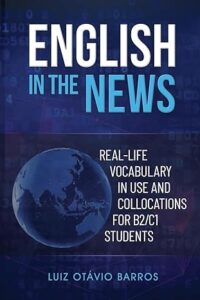I’ve been thinking a lot about the techniques I use in my classes lately. It’s easy to get caught up in shiny object syndrome and go chasing after whatever new trend is marketed to you, and anyone that knows me knows that I am hesitant to embrace new technology. I have found that sentence completion activities work well with most students as a form of informal assessment, and I sometimes forget how versatile it really is.
In this blog post I’m going to explain what I mean by sentence completion activities, give examples related to grammatical structures and vocabulary, and talk about applications in a variety of contexts.
Before going any further there are a few important considerations:
- Your students should have enough exposure to the grammar point or vocabulary that you are reviewing before completing these activities. If they are struggling to complete them, it is a sign that they either need review, they are lacking vocabulary, or they are too difficult.
- You will want to consider that some students may not be able to truthfully complete the sentences. I typically allow for answers that are truthful to honor the differences that exist among my students. (An example of this will appear with the section about breakfast foods.)
- There is no “right way” how to use sentence completion activities as long as you have a clear picture of what you want to assess. The possibilities are almost endless.
What are sentence completion activities?
It’s actually as simple as it sounds. I remember learning about them when I attended an IATEFL Chile conference in Valdivia when Penny Ur presented about the idea. You give your students a sentence that they must complete with their own ideas. The sentences that you choose should be open-ended enough to allow for a variety of answers, as this encourages variety and creativity among students.
How can teachers use them to practice grammatical concepts or structures?
If I have a class that is reviewing the use of gerunds and infinitives, I could give them a worksheet with the following sentences to complete:
- In my free time I enjoy……
- After class I need to…..
- My friends are looking forward to…..
- I sometimes avoid…..
- Some people are afraid of…..
In all the above sentences, students need to use the correct form of the verb (gerund or infinitive), but there is almost no limit to what they write besides that.
Rather than leaving the completion for the end of the sentence, it can also appear at the beginning or the middle of the sentence. Consider the following examples:
- _________________ is a good way to spend time with friends.
- _________________ is something really bad to do at a wedding.
- I think that __________________ is more interesting than ______________.
- Homer Simpson decided ________________ instead of _________________.
In those examples, we now have some more variety and can determine if students can correctly use gerunds as the subject of a sentence and as activities.
How can teachers use this same activity to review vocabulary?
To some extent students are practicing vocabulary in the examples above. We can make it even more focused on vocabulary by using sentence completions like these:
- For breakfast I usually eat _________ and _______, but I never eat _________.
- I don’t like eating ________________________.
- ________________ is my favorite type of food.
- I usually drink ___________ or ____________ at lunch and dinner, but I very rarely drink __________.
- _____________ is a dessert that almost everyone eats.
For sentence 1 above, I would also allow students to write the sentence “I never eat breakfast” as an alternative if it is their case. I would also be cognizant that not all students necessarily drink alcohol or eat meat.
How can you use this in your classroom?
I have used this activity with one on one classes with a page of 20 sentences to complete. We independently complete three answers at a time and then compare our answers, and this can lead to an interesting conversation with students and is a great way to get to know each other better.
I have also used activities like this with classes of up to 16 students. In that case, I used it as a dictation with each student writing the sentence and completing it on an individual whiteboard. Once they complete their answers, they show them to me, and I can quickly see who is using the grammar or vocabulary correctly and who isn’t. I have also turned this into a bit of a game with teams of 2 working together. They earn a point for each correct dictation and an additional point for a correctly filled in blank, but if they duplicate the answer of another team neither team gets that point.
In terms of IELTS, you can explore different ways of completing a phrase that students might hear on the listening part of the test. Consider the following example describing a park with a blank you must fill in with two or fewer words:
Tennis courts: next to the ___________
Your students might guess some of the following words:
large trees, playground, walking path, restrooms, benches, parking lot
This will not only help activate your students’ prior knowledge and prepare them to listen, but also expand their vocabulary.
All of these activities suggested above can be assigned as homework. In the following class students can compare their answers with a partner and check each other’s work. Teachers can then collect their work to see the ideas they came up with and how many corrections they made (if any) as a way of assessing their understanding.
Conclusion
Sentence completion activities are a versatile way to assess your students’ learning in terms of grammatical structures and vocabulary. In addition to the examples above, I have also been able to apply them to the present perfect simple and continuous, zero to third conditionals, the passive voice, and -ed and -ing adjectives. They offer a welcome break from textbook activities and can allow students to be creative.
Is this an activity you have used in your classes? If so, leave a comment and let me know how you have used sentence completion.


